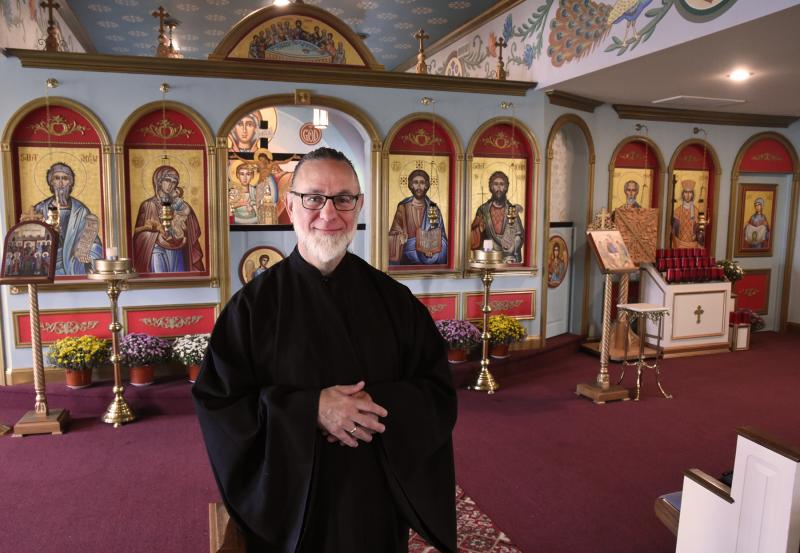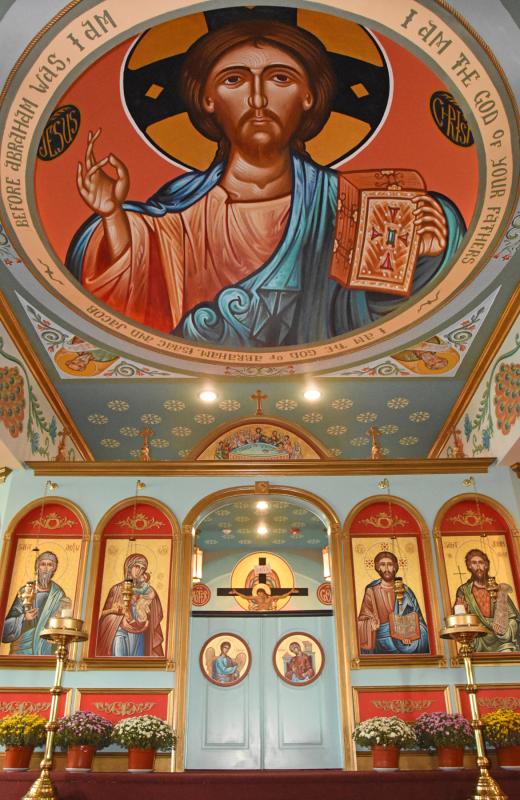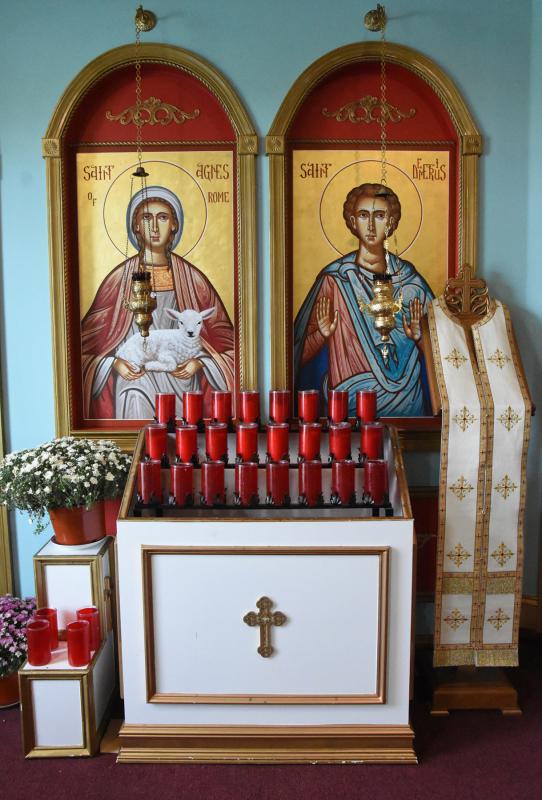In 2017, St. Andrew the Apostle Orthodox Church on MacKenzie Way in Lewes dedicated the expansion of its church to accommodate the rapidly increasing number of Orthodox Christians from the greater Lewes and Rehoboth Beach areas. From its humble beginnings in 2005 as a mission church of the Antiochian Orthodox Christian Archdiocese of North America, with services held initially in the Grange Hall on Savannah Road, St. Andrew has evolved into a vibrant house of worship serving the area’s Orthodox Christians of several denominations who count themselves among the 250 million Orthodox Christians throughout the world.
With the completion of the church expansion, the beautification and iconography committee developed an ambitious plan to adorn the entire church with icons. Icons are religious works of art common to all Orthodox Christian churches. There now are no fewer than 50 icons in the nave and the sanctuary. All were commissioned by parishioners in honor or memory of a loved one or friend. Iconographer Nicholas Papas of Houston, Texas, whose theological art adorns Orthodox Christian churches throughout the United States and several European countries, was commissioned to fulfill this project.
It truly is a unique experience for visitors to enter St. Andrew or any Eastern Orthodox church for the first time. They cannot help but be overwhelmed by the impact of the service, which Orthodox Christians call the Divine Liturgy, on all their senses. The pungent aroma of incense teases their nostrils. The priest’s and deacon’s colorful vestments dazzle the eyes. They listen to the responses of the priest, the chants of parishioners, and the melodic choir a cappella whose rich, harmonious and deeply moving voices enhance one’s spiritual devotion. They note that the faithful partake of divine nature through the Eucharist. Their eyes are drawn especially to the mystical icons on the iconostasis, the screen separating the nave from the sanctuary. They gaze in awe at the walls and ceiling covered with theological art or icons that represent a vision of the Eastern Orthodox faith expressed in images through lines, symbols and colors.
A very abbreviated explanation illustrates why icons are so important in the Eastern Orthodox church. These images complement the words of the Divine Liturgy. They are visual representations of the Holy Angels, the Holy Mother, the Saints, and scenes from the Bible. They are purposefully painted in two dimensions and are not lifelike. They are painted on wood or canvas. Some are done as frescos or mosaics. Many are enhanced with renderings such as peacocks, shafts of wheat, ivy and grapes, each with its own religious symbolism. Within every hand-painted icon, every color enhances the true meaning of the events depicted in the scene. It is a perfect combination of metallic gold and bright colors that have the same substance as words. Orthodox Christians do not pray to icons. They venerate an icon for what it represents to keep their minds focused during services. To Orthodox Christians, icons are a bridge – the windows to heaven.
Of the many icons on the walls and ceiling of the church, several deserve special mention. They are but a small part of the vast treasury of images from the iconographic tradition of the church. Variations of these icons are common to all Orthodox Christian churches. The east wall in the sanctuary immediately behind the altar is the icon of the Mother of God and Christ Jesus with arms outstretched “wider than the heavens.” In the front of the church is the iconostasis, which brings together the nave and the sanctuary. Its center doors, called Holy Doors, are used only by those consecrated by ordination, such as the priest or bishop. The Deacons Doors to the right and left are used only for anyone having a liturgical reason for entering the sanctuary, such as deacons or altar servers. The lower or sovereign tier of the iconostasis in an Orthodox Christian church always displays four images: to the right of the center or Holy Doors is the icon of Christ the Savior; to his left is St. John the Baptist; to the immediate left of the Holy Doors is the icon of the Mother of God and the Infant Jesus Christ; and to her right is the icon of the church’s patron, St. Andrew the First-Called. Above the iconostasis is a painting of the mystical Last Supper – the first Divine Liturgy. An Orthodox cross sits atop the iconostasis.
In Eastern Orthodox churches, the highest point of the church is the dome or apse. Located in the nave, it is reserved for the Lord, the Pantocrator Christ, ruler of the universe. The icons of the four evangelists Matthew, Mark, Luke and John surround the Pantocrator.
The Hospitality of Abraham, often called The Trinity, completes the icons on the ceiling of the nave. The original was painted in wax by Andrei Rublev, who is considered one of the greatest medieval Russian iconographers. The ceiling icons are complemented with the scene of the Dormition of the Theotokos and Ever-Virgin Mary. This iconic scene commemorates the repose, the dormition or “falling asleep,” of the Mother of Jesus and the transition or assumption of her body into heaven.
The Rev. Father Herman Acker, pastor of St. Andrew, extends a most warm welcome to visitors to view and to enjoy a guided tour of the nave to better appreciate these beautiful works of theological art. The entire community of St. Andrew welcomes everyone to its annual Fall Festival and Yard Sale, Friday and Saturday, Oct. 15-16. Featured are ethnic foods and bake sale complete with a variety of Greek pastries. There will also be a basket auction. The church is located at 33384 MacKenzie Way, off Plantation Road near Lewes. For more information, call 302-945-5197 or go to the church website at orthodoxdelmar.org.






















































